
Sentimentally Analytical Trip to the North of England
25/09/2013
Part One
Cities of course appeared in ancient times, there is no question Babylon or Athens; finally, Rome, a city of cities; Urbi et orbi – "To the city and the world», here urbi is not simply "to the citу", but in fact – "to Rome". Rome is a synonym of the word urbs; when at the end of Early Middle Ages, new kinds of communities started appearing (or the abandoned ones got a new life), "Rome" stopped being a symbolic equivalent of "city". That equivalent was now "burg" – quite often, a self-governing administrative unit that lived by craft, trade, sometimes even by agriculture in the lands adjacent to the walls of the town, a settlement within definite borders with a precise and complicated legislation and relationship either with the crown or the local lord.
What do we mean by city as a place of action and object of description (albeit indirect)? Athens – Socrates and Plato, Rome – Petronius, medieval Paris – Francois Villon. Then came Renaissance to be followed by Baroque, with Rabelais and Pepys. Afterwards comes the Age of Reason with its multiple urbanized private storylines by Defoe, Rousseau, de Sade, Goethe. I am not positive, but it seems that the first urban artists also appeared around that time; at least I think – and am actually positive – so did two of the best ever in the history of art -- the assiduous, gentle, attentive to harmony and detail Canaletto and the fervent moralist Hogarth.
All of the above has been invented only to state the obvious: a real, contemporary European city, the kind of city that we, inhabitants of the continent know, appeared only at the end of the 18th century, along with the beginning of the industrial revolution. True, in Athens there was a market and people's assembly; in Rome, there was the forum, stadium and the first ever self-serve shop, and the burg was divided into blocks administered by the local denizens – all of that is true. Yet the modern city with its three indispensable parts (the blocks for Work, Rest and Recreation), with its system of transportation, healthcare, administrative division, social problems and the very idea of planned development – all of this appeared only with the production of value added and the emergence and subsequent rule of the bourgeoisie. The communist experiment in the territory of the former Russian Empire did not change its principal traits despite the anti-bourgeois, supposedly proletarian character of the new powers that be. The workers' blocks were for Work, bedroom communities for Rest and the centre with its restaurants, concert halls, department stores and theatres for Recreation. There were of course attempts to create a kind of autarkic areas where the nine- or fourteen-storey panel buildings stood side by side with cinemas, service complexes, shopping centres and stadiums (with, say, a factory next door), yet a circumscribed, self-reliant space did not emerge: on weekends, the locals still took their families and went to spend time and money downtown. Then the USSR came to an end and everything returned to its proper place – I am speaking, of course, of places where they tried to build communism.
But there were places where instead communism they tried to build socialism. For instance, in Great Britain, after the Labour leader Clement Attlee won the 1945 parliamentary election. Labour was guided to the future by their programme "Britain's Road to Socialism" and along this road, the system of free medical care, the forked and confused network of social support and much else was created. The rather developed programme of building social housing that already existed became common; only now, instead of terraced houses, bungalows and pseudo arts-and-crafts buildings of red brick, it was the modernists of the post-Bauhaus school that had their day in the sun. British cities, particularly the industrial centres of northern England were covered with concrete hulks of which many are considered masterpieces of architectural brutalism. Most of them are still standing resembling joyless mastodons of a different, great historic era; either in half-empty industrial cities or surrounded by bourgeois gentrified cosiness, these houses, blocks and whole architectural complexes seem (and in fact are) ruins of a utopian future that never came. This utopia differed from the communist one: instead of happiness it offered reasonable comfort and real social justice. The price (in the direct sense of this word, the financial costs of the wonderful project) turned out to be too high and the future, alas, never set in. The brazen neoliberals came to power with Thatcher at the helm and sold out its material remnants.
British architectural critic and essay writer Owen Hatherley cleverly noted the similarities between Thatcherism and punk rock (they are almost contemporaries: Sid Vicious died the same year Maggie came to power). After a rather lengthy (and rather puny) era of utopianism (socialist, hippy, any other), which offered the society some (albeit vague, but still) an image of the future, there arrived cynical pragmatists, fast of word and deed. And they ruined everything. By the way, if punk petered out in a few years, fairy-tales about the invisible hand of the market are still told today, albeit with little success.
It is interesting what happened subsequently – both with music and with architecture. In the 1980s, the era of developing and gentrification set in which thoroughly does away with any traces of heroic industrial (meaning capitalist and socialist in one fell swoop) past; the main task of the developer is to make sure that in some particular block it is nice, cosy, stylish and expensive. If there stood a factory, let us turn into a shopping centre or a gallery, a warehouse should become a café or a design studio, concrete social houses will have to be torn down and the country graced with luxury flats with various extras in the spirit of the already lost bobo (bohemian bourgeoisie). And, of course, more lawyer's offices, health food shops, gastro pubs, vintage boutiques and music clubs. Altogether it is called creative economy or service economy; but a simple fact is being carefully concealed: for a "service economy"(or "sector of service economy") to exist, there must be those serviced, those who are producing something besides design thingamajigs and lawyers' bills. At the moment, however, in the chain coffee-shops in the developed city blocks, with light jazz in the background, one category of people are performing services to other people who are servicing third kind of people who, in their turn, are offering their services to the first category. Money for this feast of life comes from the blown up real estate bubble in these same city blocks; it is blown up by banks and investment companies that are a part of that same service economy, but everything which the above providers of services service themselves is being produced in the outsourced world outside the borders of the European Union. It is not the future, it is the eternal present.
In music (and in urban culture generally) things were different. The fast, cynical, down-to-earth and even joyful punk was replaced the rather grim postpunk, imbued from the very beginning by melancholy for the former future. It could have been born only in the same depressing city blocks that were built by Utopian architects in the big industrial cities and then – after neo-liberals destroyed industry – practically abandoned. In Britain, it all began with the cheerless Joy Division, continued with poisonous acerbity of The Fall, then came the depressive and deprave teams from the Hasienda club and the all-things-at-once Madchester. This happened in Manchester, the former industrial capital of the world, which in the 19th century was nicknamed Cottonopolis. In the 1980s, this Rome of bourgeois production turned into an abandoned, rustic Rome after the invasion of the barbarians. In the 1990s, gentrification set in, turning Manchester quite literally an exhibit of achievements of neo-liberal urbanism. The centre was certainly spruced up. Some of this is even beautiful and cultured: one may have a cup of coffee or sip on a cocktail or hipster IPA, or go to the premiere of a fashionable play or even a symphony. Yet there hasn't been a single great band for at least twenty years, after, god forbid, Oasis. And there have not been any other significant achievements in the sphere of pop-cultural servicing of the middle class. As far as literature is concerned, no new Anthony Burgess appeared in the city. But what does it really matter? There is always someone who can be brought here from elsewhere – money is no object.
Sheffield is another example. In the old days, no one spun or wove here: this was a place where they smelted metal and made various mechanisms. Thatcher decided that all of this is nonsense and all of a sudden there were more unemployed people in the city than there were those gainfully employed. Yet the city was wonderful, much more interesting than Manchester. In the 1960s, the local municipal administration was so leftist that Sheffield was nicknamed the "Socialist Republic of Southern Yorkshire". Here was where the best brutalists worked, providing the public with ample reasons for excitement, horror and gnashing of teeth. I am no architectural expert, but it seems to me that with the exception of the London complexes of Barbican and Brunswick Cetnre, the most interesting architecture was found here: the residential area Park Hill and Castle Market. In some (purely aesthetic, I admit) sense, Sheffield was lucky: it was only partly gentrified, so it retained the whole noble, orphaned spirit of social Utopianism, which died of dystrophy at the age of about thirty-five. Be it as it may, post-punk did not flourish here; the entertainment of local pop musicians was more sophisticated and versatile. The "proletarian Casanovas", Pulp, sang their sad songs in the social flats of Park Hill and on the hills of the city. Add to that the local guitar hero-lover/rockabilly-singer Richard Howley and one of the first and best British electronic teams Cabaret Voltaire. All that one should know about this city, however, should one decide to go on a short exploratory cultural visit is said here:
And here is the text:
Just behind the station, before you reach the traffic island, a river runs thru' a concrete channel.I took you there once; I think it was after the Leadmill.
The water was dirty & smelt of industrialisation
Little mesters coughing their lungs up & globules the colour of tomato ketchup.
But it flows. Yeah, it flows.
Underneath the city thru' dirty brickwork conduits
Connecting white witches on the Moor with pre-raphaelites down in Broomhall.
Beneath the old Trebor factory that burnt down in the early seventies.
Leaving an antiquated sweet-shop smell & caverns of nougat & caramel.
Nougat. Yeah, nougat & caramel.
And the river flows on.
Yeah, the river flows on beneath pudgy fifteen-year olds addicted to coffee whitener
And it finally comes above ground again at Forge Dam: the place where we first met.
I went there again for old time's sake
Hoping to find the child's toy horse ride that played such a ridiculously tragic tune.
It was still there - but none of the kids seemed interested in riding on it.
And the cafe was still there too
The same press-in plastic letters on the price list & scuffed formica-top tables.
I sat as close as possible to the seat where I'd met you that autumn afternoon.
And then, after what seemed like hours of thinking about it
I finally took your face in my hands & I kissed you for the first time
And a feeling like electricity flowed thru' my whole body.
And I immediately knew that I'd entered a completely different world.
And all the time, in the background, the sound of that ridiculously heartbreaking child's ride outside.
At the other end of town the river flows underneath an old railway viaduct
I went there with you once - except you were somebody else -
And we gazed down at the sludgy brown surface of the water together.
Then a passer-by told us that it used to be a local custom to jump off the viaduct into the river
When coming home from the pub on a Saturday night.
But that this custom had died out when someone jumped
Landed too near to the riverbank
Had sunk in the mud there & drowned before anyone could reach them.
I don't know if he'd just made the whole story up, but there's no way you'd get me to jump off that bridge.
No chance. Never in a million years.
Yeah, a river flows underneath this city
I'd like to go there with you now my pretty & follow it on for miles & miles, below other people's ordinary lives.
Occasionally catching a glimpse of the moon, thru' man-hole covers along the route.
Yeah, it's dark sometimes but if you hold my hand, I think I know the way.
Oh, this is as far as we got last time
But if we go just another mile we will surface surrounded by grass & trees & the fly-over that takes the cars to cities.
Buds that explode at the slightest touch, nettles that sting - but not too much.
I've never been past this point, what lies ahead I really could not say.
I used to live just by the river, in a dis-used factory just off the Wicker
The river flowed by day after day
One day I thought, One day I will follow it but that day never came
I moved away & lost track but tonight I am thinking about making my way back.
I may find you there & float on wherever the river may take me.
Wherever the river may take me.
Wherever the river may take us.
Wherever it wants us to go.
Wherever it wants us to go.
Со времён Джарвиса, Ричарда и шеффилдских вольтерьянцев я про культурный экспорт из этого города не слыхал.
From the times of Jarvis, Richard and Sheffield Voltaireans, I have never heard anything about cultural exports from this city.
Part Two
Here there will be photos and brief explanations. This summer, I decided to visit two main (forgive me, Newcastle and York!) cities of northern England. What I have written in the first part of the text came to me during that trip, on a train, in the process of looking through the window and rereading the outstanding book by Owen Hatherley A Guide to the New Ruins of Great Britain. For that reason, the pictures came out the way they did. They are accidental (and it is natural, the author of these lines is no photographer, not even an amateur). Purposeful in deliberating the nature of choice. Ideologically charged. Here they are.
Manchester. Centre. Bridgewater Canal area, Oxford Street, Deansgate and further to the Irwell River.
Pay attention to (one should admit one's weaknesses, should one not?) the very beautiful skyscraper Beetham Tower, on the former factory, where rubber for Macintoshes was produced and what remains of Hacienda (that house was torn down, developer's housing was built in its place, and a plaque was put up: here used to be EVERYTHING).
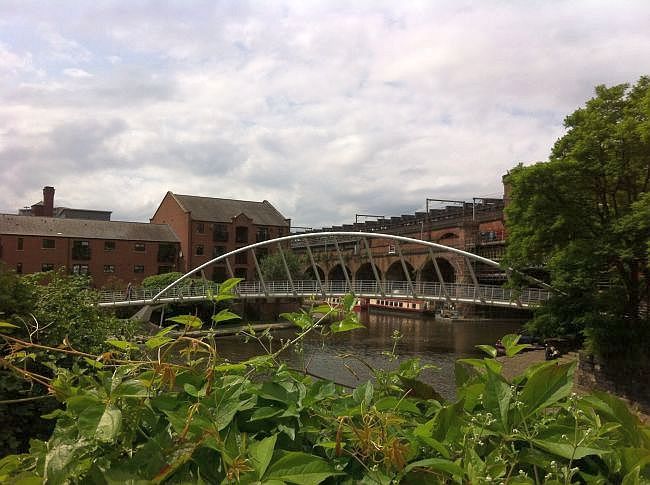
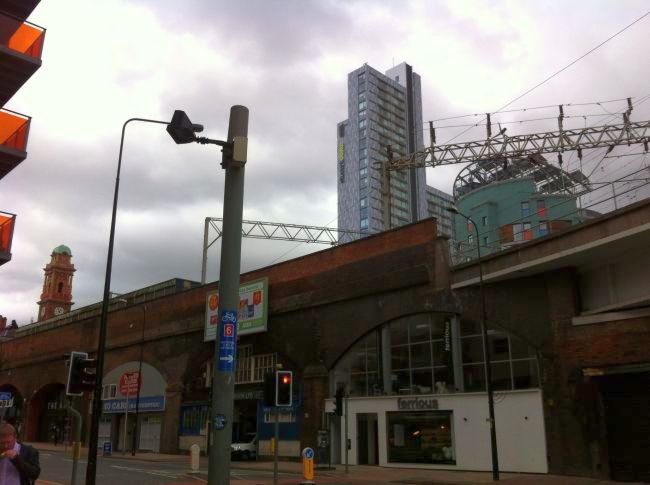
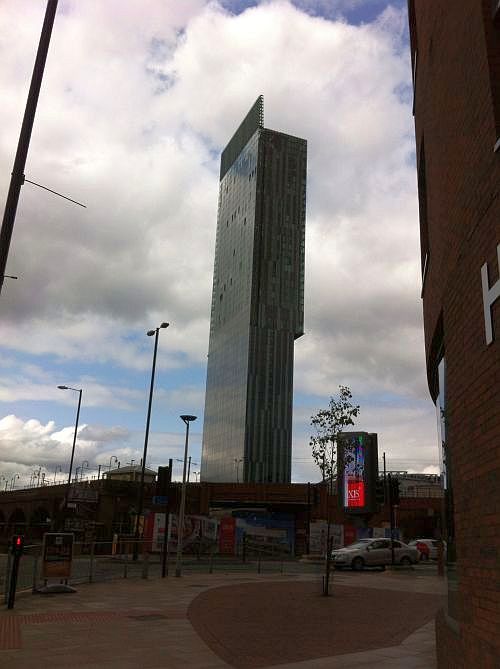
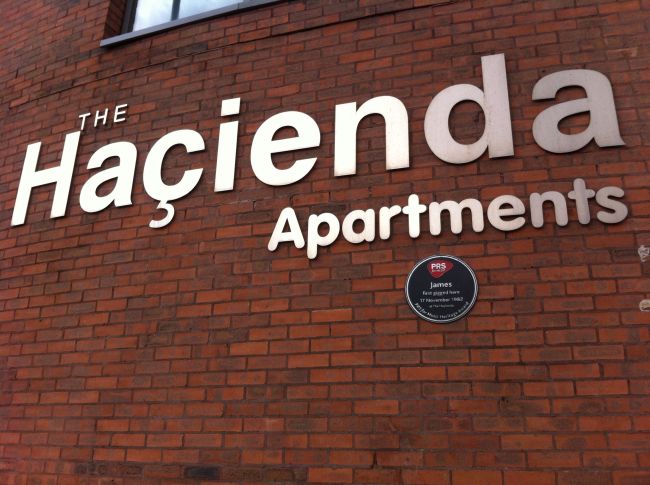
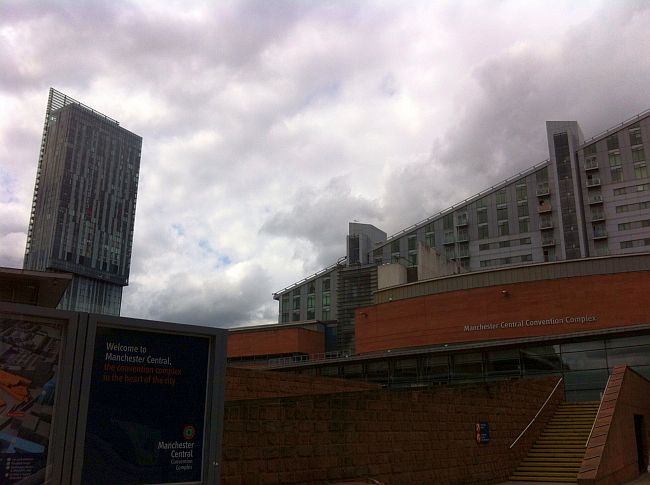
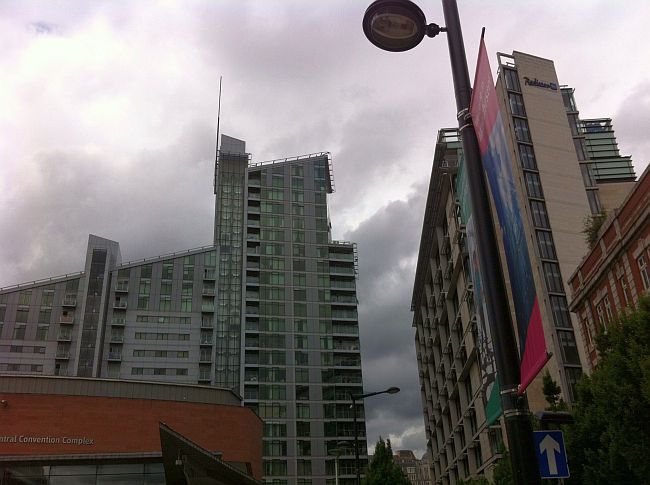
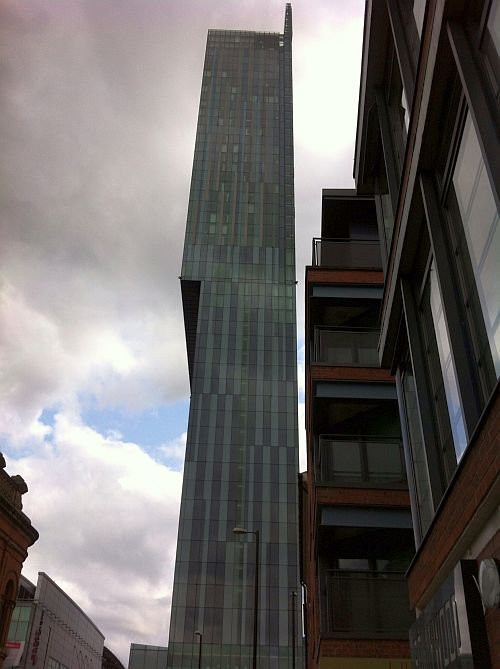
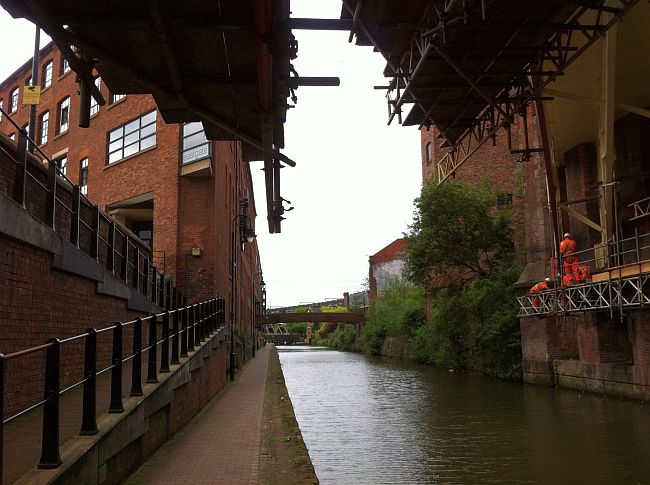
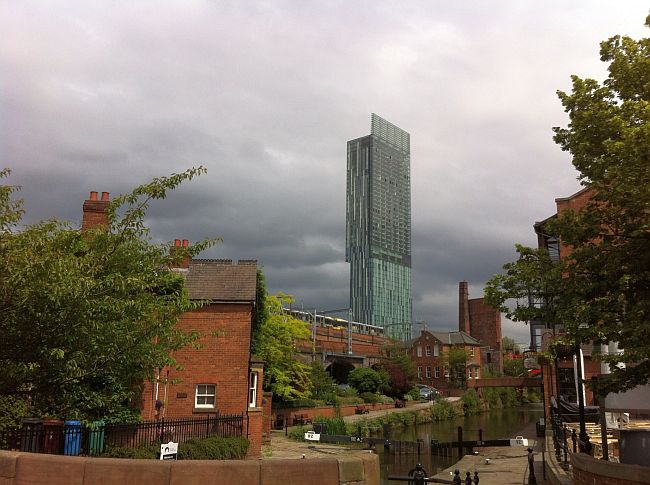
Sheffield: skyline of the city from Park Hill and Park Hill itself. Developers are trying to take over a part of the complex, another part has been abandoned and here and there old socialist inhabitants are still to be found. Pay attention to the striking "streets in the sky".
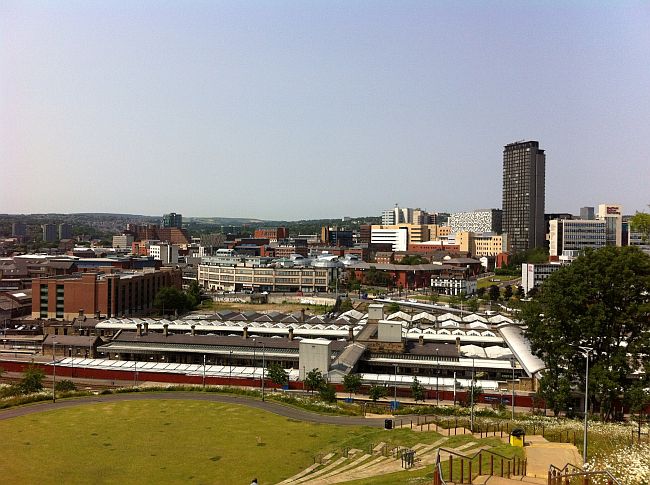
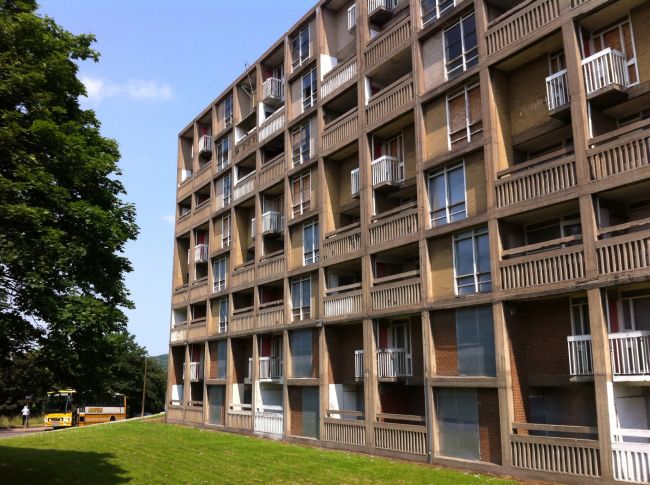
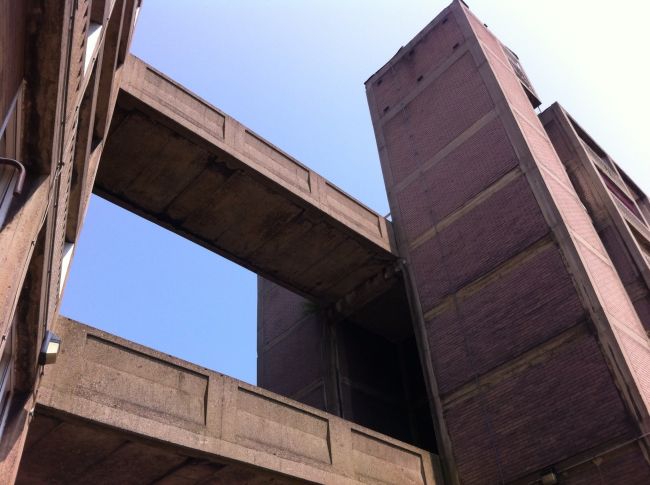
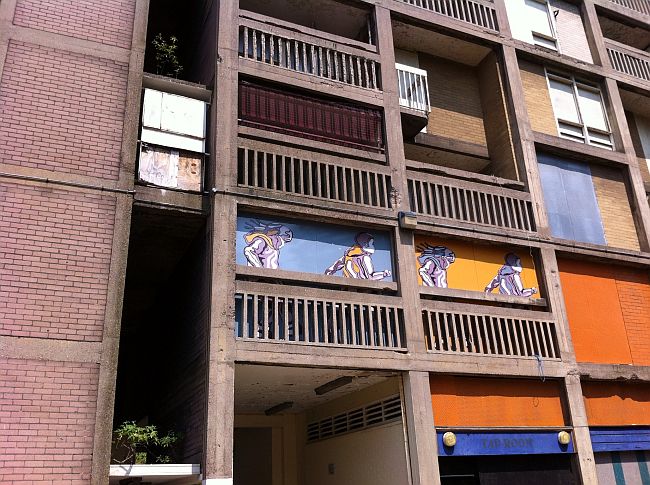
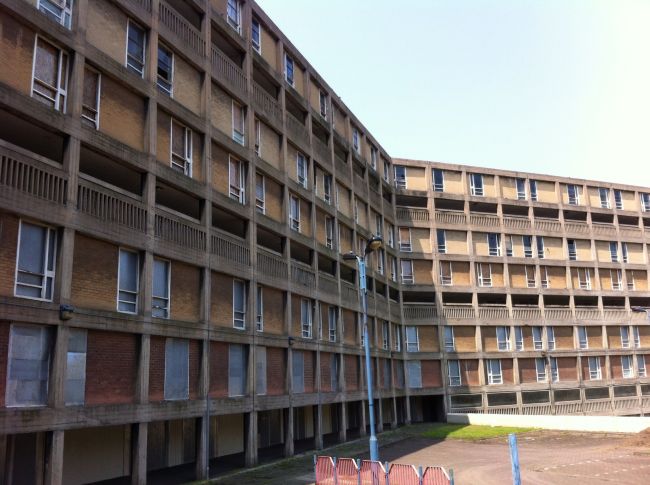
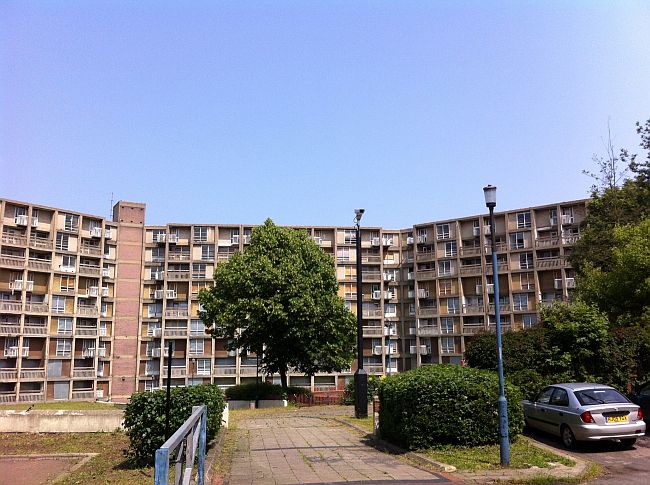
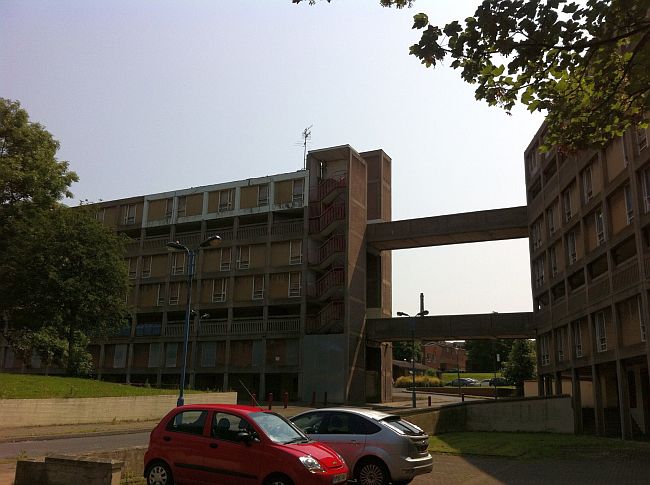
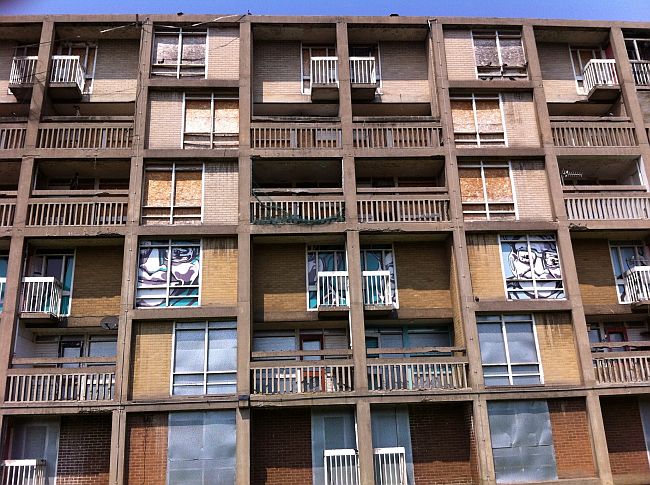
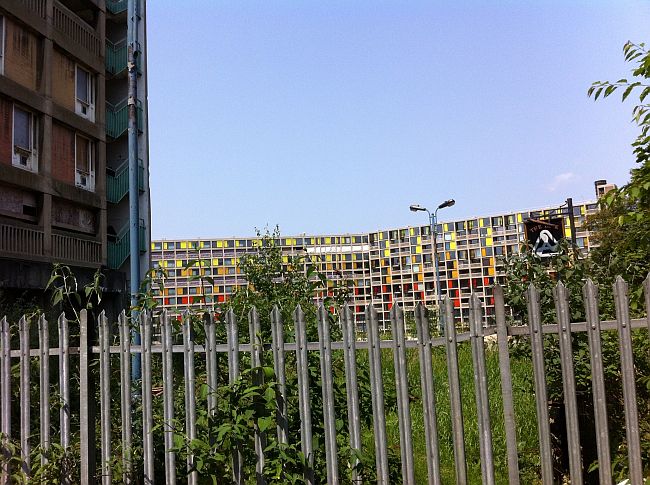
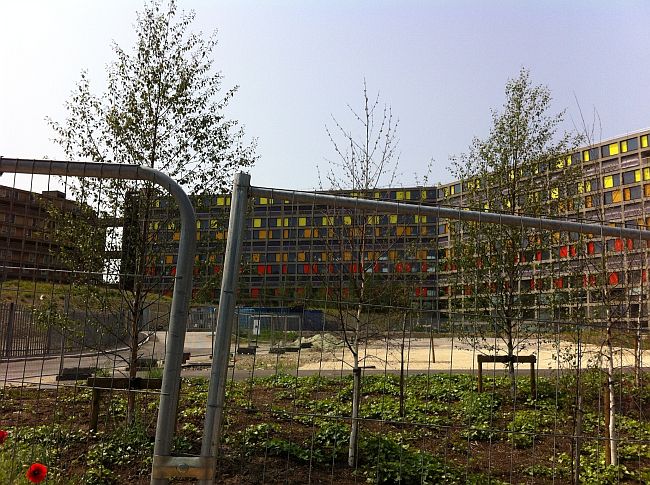
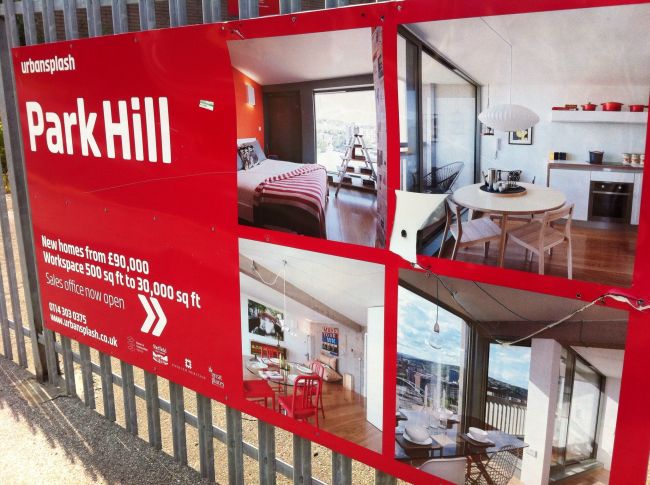
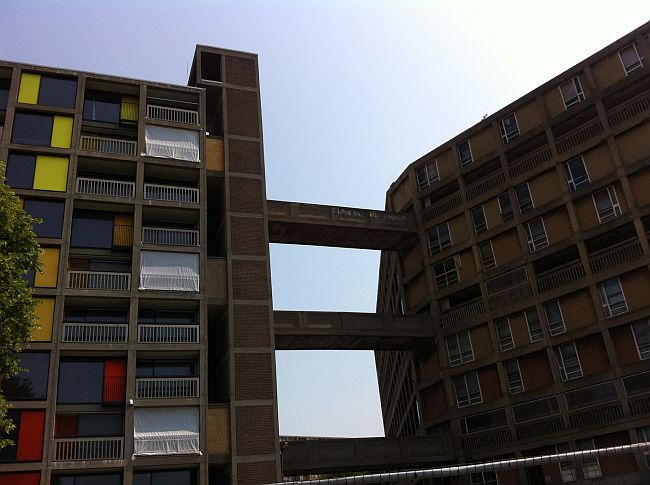
P.S.
Instead of an afterword: this video to me is something truly stunning. Joy Division performs at a Manchester club: